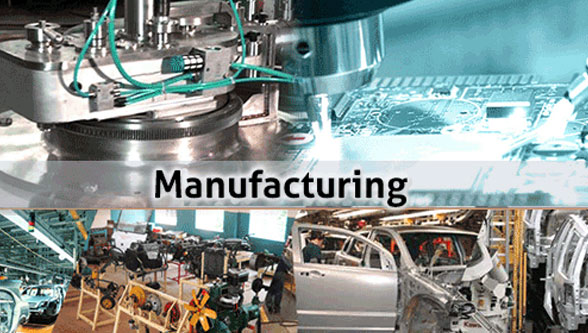There are many prominent reasons behind the slow growth of industry; foremost being heavy tax burden, government’s policy issues, high land cost, labor regulations and red taping…
Article by Dr. Neeraj Bhanot and Tanveer Jhajj
India’s green revolution has successfully been able to provide both food and economic security to the country especially to the population associated with agriculture and allied activities. In this context, Punjab has witnessed high economic growth year after year and as of today; the state has GDP of 5.18 lakh crores (2018-19).
Despite having a 1.9 per cent share of land and 2.30 per cent of India’s population, the State has still managed to contribute about 2.82 per cent of India’s GDP as per 2018-19 statistics. Though the State’s economy is having agrarian-character, still manufacturing and its associated activities contribute about 25 per cent of the State’s GDP.
Punjab houses a plethora of manufacturing industries in different sectors being textile, machine tool & automotive components, cycle parts, sports goods, and light engineering goods. Punjab has ranked 20th in ease of doing business state index brought by NITI Aayog in 2018 while our neighboring Haryana and Himachal Pradesh have 3rd and 16th rank respectively. As per the study conducted by the World Bank, Punjab has the easiest procedures to set up a business despite which it has limited growth of manufacturing industries, which makes it important to analyze the underlying issues.
Punjab’s industrial growth rate has been 6.45 per cent in 2018-19 while agriculture and allied services grew at 0.49 per cent for the same period highlighting agrarian crisis. There are many prominent reasons behind the slow growth of industry; foremost being heavy tax burden, government’s policy issues, high land cost, labor regulations and red taping.
Introduction of single-window clearance system and Invest Punjab also could not do much. In addition, DIPP’s reform count of 2019 data shows work done on only 48 out of 184 indicators with negligible focus on labor laws reforms and land lease issues. It will be worth mentioning that private real estate players have developed industrial estates with requisite infrastructure but at a high cost creating barriers for small industries.
The electrical supply for industries costs very high, however, government provides subsidized power to SME at 5 rupees per unit but with certain caveats. The trends of youth migrating abroad or to other states reflect the employment conditions prevailing in the state failing to encash human dividend.
Punjab government can easily torpedo the discrepancies, which plagued the manufacturing potential by bringing certain reforms in the current policies creating land bank in all regions prioritizing the utilization of wastelands. Though the acquisition of such land may be difficult from the landowners but suitable compensation policy to mitigate such a situation could be framed in anticipation. Further, surplus labor of agriculture can act as an inbuilt opportunity to invest in the manufacturing sector. Currently the MNREGA labor is not fetching needed results and alternately their absorption has to be planned to generate employment opportunities.
Opportunities could also be explored to make state’s air cargo facility as a part of their logistic support. It will act as a booster for manufacturing sector in the shape of circulation and economic development of the state. Incentivization can also be given to attract manufacturing units for revival of the setting up of new industry by allowing change of land use from agricultural use and tax sops for industrial units.
Sustainable development by providing special economic relief packages can be created for those industries, which adopt sustainable manufacturing practices in order to curb the environmental damage, by the industry actions. A similar focus is also required on the technical and vocational training of the labor force to enhance quality and innovation skills. Suitable directions and help can be sought from Directorate of Micro, Small and Medium Enterprises and other State Government machinery.
The state should also promote academia – industry alliance for addressing issues faced by the industry. The same can be achieved by way of mapping the technical and managerial requirements of the industry with the expertise of the institutes throughout Punjab.
Last but not the least, the government should also rise to the occasion for needful efforts in providing infrastructural support viz. roads, water connection, sewerage and waste management as they act as critical barrier towards sustainable growth of manufacturing industry. Investing in Punjab is worth and has potential yet unexplored future trade gateway to western and central Asia (subject to the geopolitical conditions).
About Authors:
Dr. Neeraj Bhanot holds PhD in Sustainable Manufacturing domain from IIT Delhi; and Tanveer Jhajj holds MTech in Environmental Science and Engineering from GNDEC Ludhiana.




